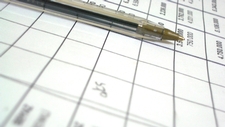Making and Recording Observations

TEKS Objective
The student is expected to collect data by observing and measuring using the metric system and recognize differences between observed and measured data.
Essential Understanding
The student uses scientific inquiry methods during laboratory and outdoor investigations.
Science Background
Research Methods, Description: Visionlearning (website) - Learn how scientists use detailed descriptions of their observations to identify patterns in natural systems and events.
Research Methods, Description
Visionlearning, www.visionlearning.com
Signature Lesson
Inquiring Minds: National Institutes of Health (website) – Students use observations as evidence to deduce what is on the bottom of a “mystery” cube.
Inquiring Minds
National Institutes of Health, science.education.nih.gov
The mystery cube template can be found at the following link (pages 1 and 2):
Mystery Cube Templates
National Institutes of Health, science.education.nih.gov
- Supporting Lessons
- Extensions
- Assessment Ideas
- Literature Connections
- Related
TEKS - Additional Resources
Supporting Lessons
Observing Not Just Watching: Pennsylvania Department of Education (website) – Students practice their observational skills with puzzle pieces and learn the importance of making good, careful observations.
Observing Not Just Watching
Pennsylvania Department of Education, www.pdesas.org
Elaboration Lessons and Extensions
Ooey Gooey: National Institutes of Drug Abuse (PDF) – Students make observations with “goo” and then use these observations to deduce what the ingredients of the “goo”.
Ooey Gooey
National Institutes of Drug Abuse, www.drugabuse.gov
Assessment Ideas
Assessment: North Cascades and Olympic Science Partnership (website) - Use the rubrics provided to assess the quality of students’ scientific drawings, daily observations and use of their science notebooks.
Assessment
North Cascades and Olympic Science Partnership, www.sciencenotebooks.org
Literature Connections
So Do You Have a Science Fair Project, Henderson, J. ISBN-13: 978-0471202561
What’s the Plan? Designing Your Experiment. Hyde, Natalie ISBN-13: 978-0778751540
Solving Science Questions: A Book About the Scientific Process. Chappell, Rachel M. ISBN-13: 978-1600445422
Additional Resources
Naturalist Journals: BioEd Online (website) - Teacher guide covering the uses and benefits of naturalist journals, which for centuries have helped scientists organize sketches, pictures and written observations.
TEKS Navigation
Grade 3
Need Assistance?
If you need help or have a question please use the links below to help resolve your problem.

Comments